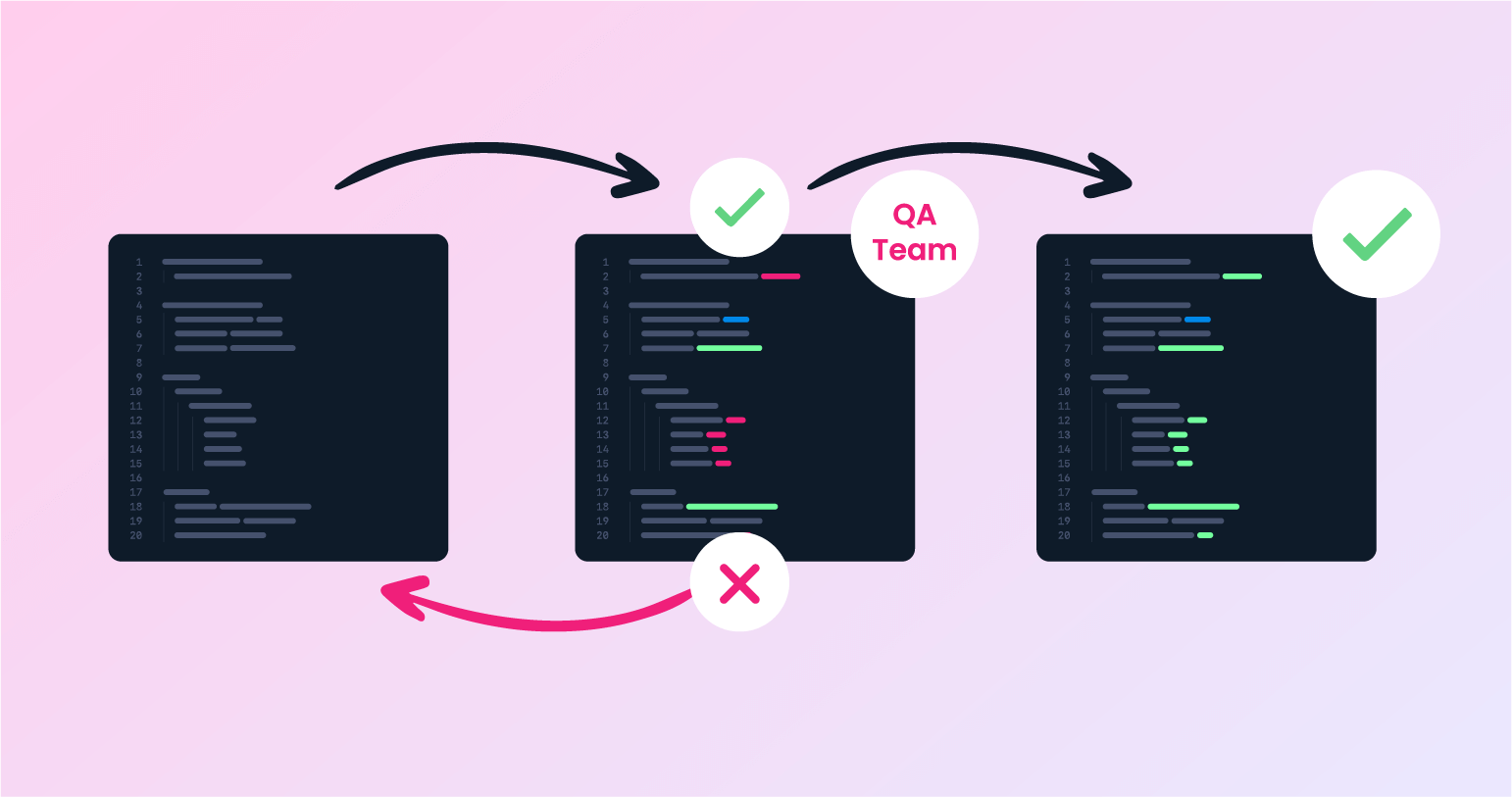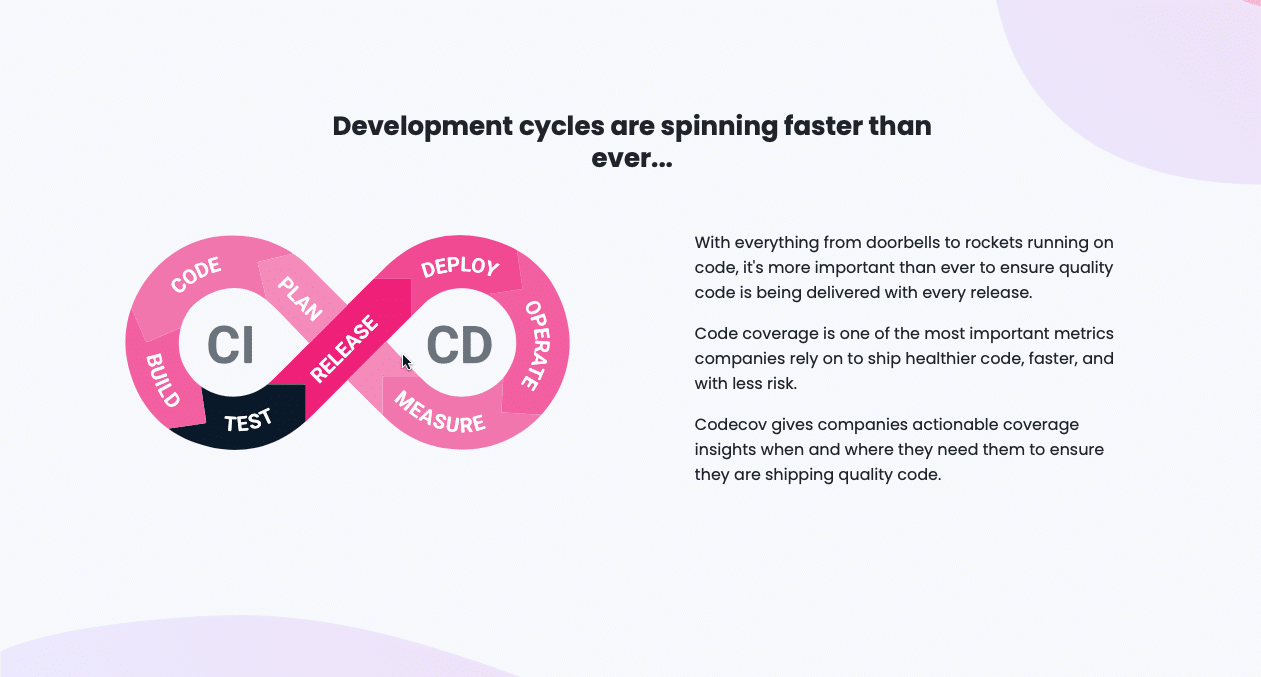
Untested bugs and broken code are the most common bugs found in production environments. Quality assurance plays an integral part in the software development process. It ensures that applications deployed into production are error-free, user-friendly, and of the highest quality.
While developing a complex software application without a QA team is possible, it adds additional responsibilities to developers without maximizing their capabilities. In this guide, we’ll discuss the roles and responsibilities of the QA tester, QA developer, and QA manager, and how a QA team can best support product and development teams.
QA Tester
Traditionally, a QA tester manually tests an application or website, trying to break it. While QA testers do focus on manual testing, that’s not all the quality assurance process entails.
A QA tester also ensures the overall quality of the testing process and the end product. They are advocates for quality on their team, encouraging others to increase the level of quality in the work they create, the processes they use, and the code they write. The QA tester is a champion of the end-user and seeks to improve development and testing processes to deliver a higher-quality product to the customer.
What is End-to-End Testing and Why It Matters
Developing software applications can be complex, especially in Agile environments where developers simultaneously work on separate software components. Before integrating components, completion of thorough testing is essential because a failure in one component could cause the entire application to fail.
End-to-end testing is a technique that validates the flow of an application and its dependencies from beginning to end. The QA works in a testing environment identical to the production or live environment, and testing activities mimic how actual end-users will interact with the application.
Designers and developers create a list of tasks related to the UI, features, and functions before testing begins. Data flow is also tracked between systems to find dependencies, flaws, and inaccuracies. The execution of a second test occurs if the system does not perform as expected during initial testing.
End-to-end testing helps reduce system risks by verifying system flow, increasing test coverage, and detecting issues associated with integrated subsystems. It brings several benefits including greater reliability, increased test coverage, greater application integrity and stability, reduced time to market, lower costs, and fewer defects in production.
The Role of Test Documentation in an Organization
Test documentation is a valuable source of information for the stakeholders in the testing process. It presents an overall view of the testing activities required, test coverage, necessary resources, and the progress of the testing effort.
While documentation may not be necessary for smaller projects, test documentation is essential for larger organizations with more complex projects, larger teams, and more comprehensive testing objectives. Test documentation can take the form of print or digital materials as well as code comments and user stories.
QA Developer
A QA developer spends more time working on tools to enhance the quality assurance process, and less time on the production of features and changes to the main product. The role of a QA developer requires technical skills as it can involve developing tests, writing code, and creating the automation scripts used in the DevOps continuous testing process.
A QA developer can work alone or as part of a team to build tools that QA testers will use during their day-to-day work.
When Is It Necessary to Have a Dedicated QA Team?
Having a dedicated QA team isn’t always a necessity, but in large, complex projects a separate team will take much of the responsibility for quality assurance away from developers so the latter can then focus on building the application.
Depending on the need, budget, or environment, a separate QA “team” could mean having a dedicated QA person assigned to each development team or creating a completely separate full-time QA team.
A separate QA team is especially important in regulated environments that require strict compliance and industry standards to ensure the safety of the software. Stakeholders and users have more confidence in the testing process and the final product upon validation and verification by quality-focused QA personnel rather than the developers who created it.
An experienced QA team will find and fix issues faster, saving time and money, and will ensure that the application meets all the legal, customer, internal, and external requirements before pushing to production.
The Complexities of Integration Testing
Integration testing is a testing technique where software modules are developed independently, combined, and then tested as a whole. Integration testing aims to expose issues that may occur as software modules interface with each other and attempt to work together.
The process can become complex since it involves combining software modules written by different developers using various coding practices and techniques. Integrating databases and hardware components is also important, not just the integration of code. All these moving pieces present several opportunities for something to go wrong.
Integration issues are harder to find and correct in production. Issues missed during integration testing can cause serious problems in the live environment that affect customer experience, customer service, and employee productivity. For this reason, integration testing must be thorough with adequate exception handling that helps the team accurately track issues to the module or interface where they originated.
The Role of DevOps in Testing
In a traditional software development process:
- Software builds are sent to the staging environment
- QA performs functional and regression testing
- QA signs off on the build when it passes all tests

In a DevOps environment, testing is a continuous process. Execution of unit and integration tests occurs upon the submission of new code to the central code repository. This helps developers verify that the code does not have errors or bugs before moving to the staging or production environment.
With QA integrated into the development process, testers and developers share QA responsibilities. Continuous testing requires the involvement of developers in the testing process from the early stages of development. This often blurs the boundaries between roles, but a QA’s primary responsibility is to make sure that the application passes all the defined tests and meets quality standards; testers are also encouraged to implement code changes when necessary.
In this way, development and QA teams work together to ensure the quality of the application throughout the entire testing and delivery cycle.
QA Manager
The role of a QA manager involves managing the development and execution of all phases of the QA testing process. This can include developing the test plan, defining quality requirements, recruiting QA personnel, and improving testing processes.
The Importance of Test Planning for a QA Team
A test plan is a document that describes the objectives, target market, internal testing team, and testing processes for a software application. It is typically a joint effort between QA and the client and contains a detailed description of the eventual workflow of the project.
Test planning aims to give the QA team a broad understanding of the scope of the application and testing process. It helps the team to set clear goals, expectations, schedules, and reporting requirements for the testing process and clarifies the time, effort, and expenses needed to deliver the project on time and within budget.
The Need for Software Compliance in Regulated Industries
Strict compliance requirements for quality and safety are the basis for software acceptance. In regulated industries such as automotive, aerospace, and healthcare, a software failure could be a matter of life or death.
A QA manager is vital to ensuring that developers maintain compliance with safety standards to ensure the safety of the software being developed. For regulated industries, software code must reach 100% coverage to ensure optimal safety. Automated standardized testing environments are a must; including test cases, deployments, and pre and post-testing activities.
Get Started With Quality Assurance
QA team members on software development projects often start as developers with extra responsibilities, but a separate QA team can take the pressure off of developers, increase product quality, and improve time to market.
If you’re a small organization trying to separate your development and QA processes, consider starting with a dedicated QA person on each project. Be aware that the person you choose for this role may need to have the skills and ability to perform all three QA roles mentioned.

Conclusion
When building out a full-time, dedicated QA team, it’s important to select team members with the right combination of skills and domain knowledge to achieve your testing objectives. Defining roles and responsibilities clearly, so that each member of the team is clear on their assigned responsibilities is essential. Your QA manager will be especially important in communicating the testing process and the importance of a high-quality product to developers and other QA team members.
Codecov gives you actionable code coverage insights that are beneficial to both development and QA teams. It speeds up the development process while delivering healthier code and higher-quality applications.
